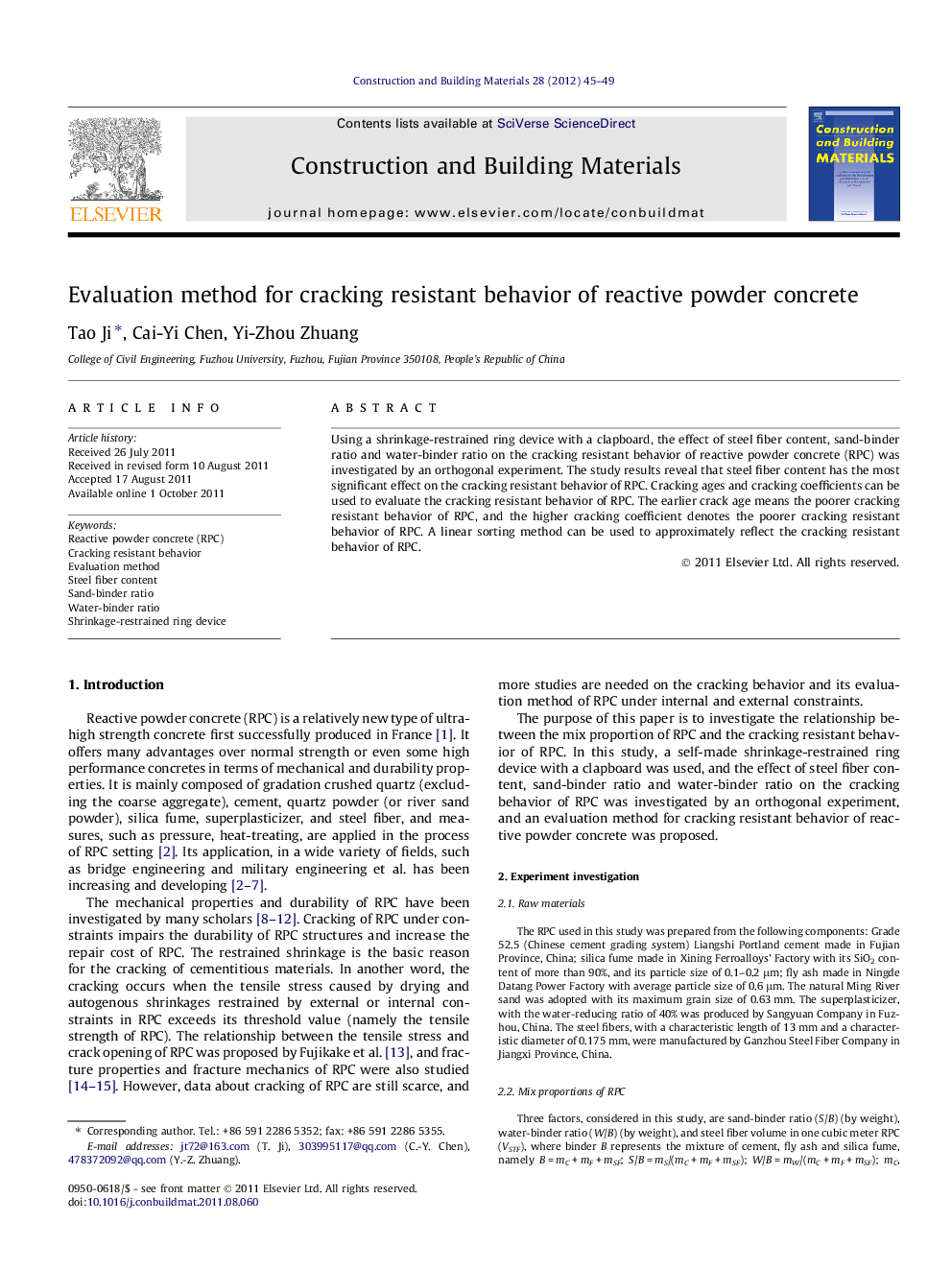| Article ID | Journal | Published Year | Pages | File Type |
|---|---|---|---|---|
| 259544 | Construction and Building Materials | 2012 | 5 Pages |
Using a shrinkage-restrained ring device with a clapboard, the effect of steel fiber content, sand-binder ratio and water-binder ratio on the cracking resistant behavior of reactive powder concrete (RPC) was investigated by an orthogonal experiment. The study results reveal that steel fiber content has the most significant effect on the cracking resistant behavior of RPC. Cracking ages and cracking coefficients can be used to evaluate the cracking resistant behavior of RPC. The earlier crack age means the poorer cracking resistant behavior of RPC, and the higher cracking coefficient denotes the poorer cracking resistant behavior of RPC. A linear sorting method can be used to approximately reflect the cracking resistant behavior of RPC.
► An evaluation method for cracking resistant behavior of RPC was studied. ► A shrinkage-restrained ring device with a clapboard was used. ► Steel fiber content, sand-binder ratio and water-binder ratio were included.
